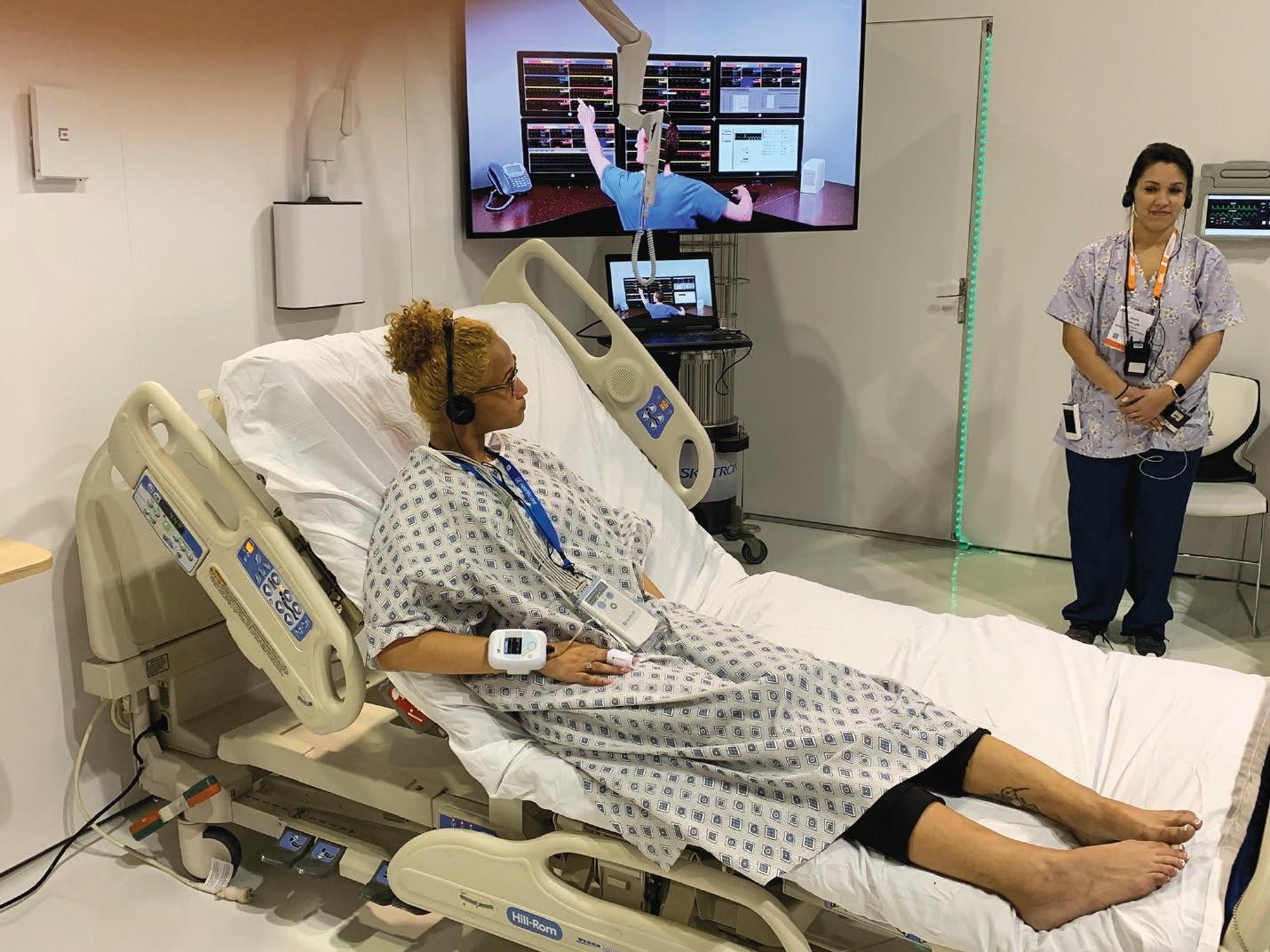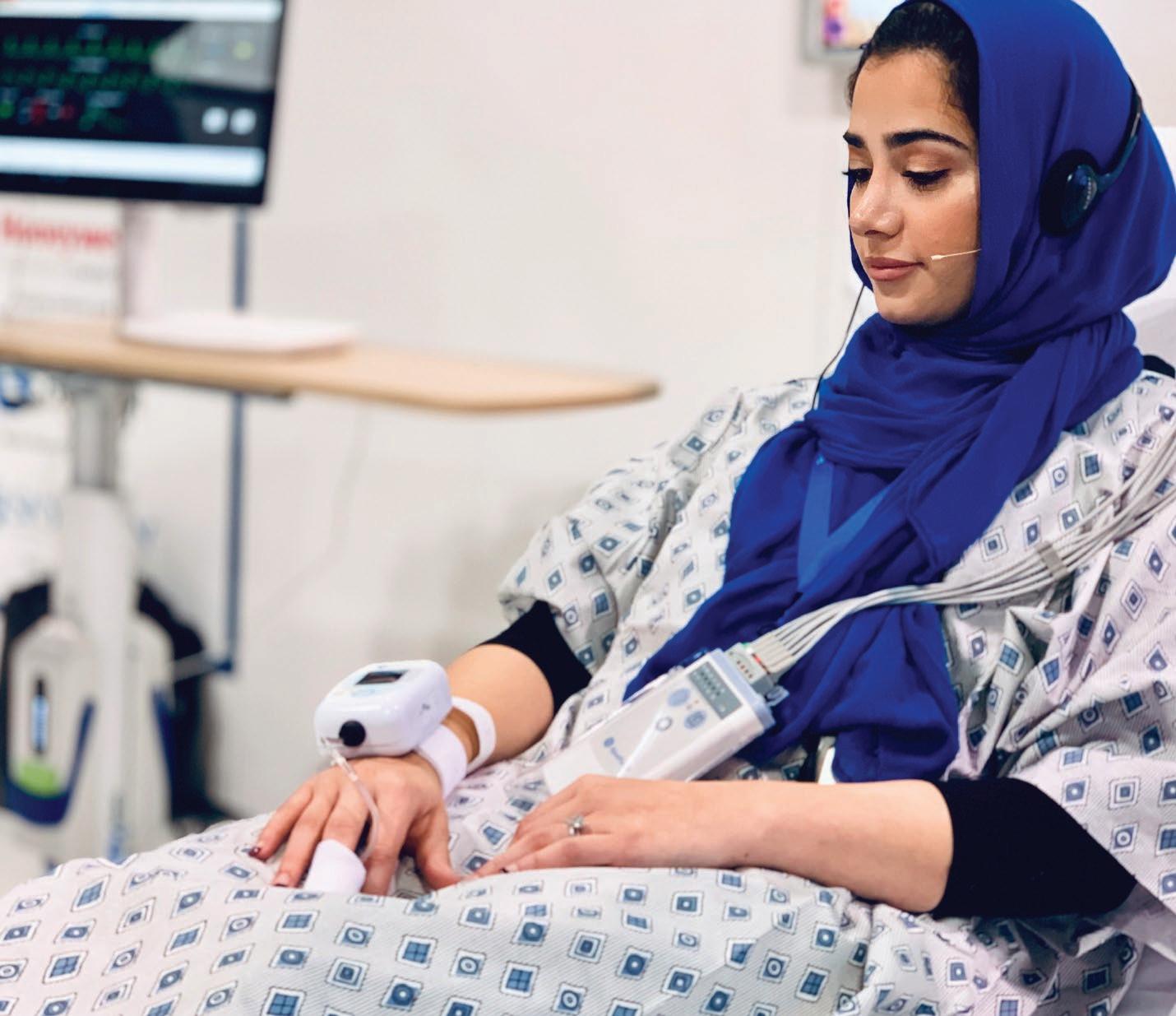5 minute read
Realities That Challenge Healthcare
Peter Dunwell, Medical Correspondent
From the patient to the whole system, healthcare is always under pressure
More intensive monitoring, which is commonly used in perioperative and intensive care settings, is more likely to lead to the early identification of patients who are developing complications than is intermittent monitoring. Early identification can trigger appropriate management, thereby reducing the need for higher acuity care, reducing hospital lengths of stay
SO FAR, we’ve considered vital signs, how they’re monitored and some pros and cons for various different methodologies. Here, I want to look at a couple of specific cases and to consider vital signs monitoring in the context of the priorities that govern a modern healthcare system.
Patients with Urgent and Fast Changing Needs Sometimes things happen very quickly with a patient and a clinician needs the means to act as quickly.
Trauma patients One group for whom a real-time and continuous understanding of their condition is very important is trauma patients. Internal injuries can cause undetected stresses that can cumulatively lead to severe changes and outcomes. The British Journal of Anaesthesia 21 ‘Early management of the severely injured major trauma patient’ summarizes the imperative, “… multiple injured patients often present with complex conditions in a dynamic situation.” In short, there is often a high pace of condition change with trauma patients in the early stages and a consequent high level of pressure on clinicians. Three things in particular need to be monitored for to manage the so-called “lethal triad of hypothermia, acidosis and coagulopathy [which] has been recognized as a significant cause of death in patients with traumatic injuries.” That is explained in the Journal of Emergency Medical Services 22 article on the subject. But trauma patients also have a higher than average risk of death after discharge although, as the Baylor University Medical Center Proceedings research ‘Timing and causes of death after injuries’ 23 noted, “Deaths among trauma patients after discharge have largely remained overlooked in the trauma literature. This is due in large part to the difficulty of follow-up in the trauma patient population.” The research continues to suggest that what amounts to an inability to monitor a patient’s condition is a consequent factor arising from this. Deteriorating patients While this group might well include trauma patients, it won’t be exclusively so. The Oxford Academic ‘Attitudes towards vital signs monitoring in the detection of clinical deterioration…’ 24 , explains, “The majority of adverse events are preceded by a period of abnormal vital signs (minutes to hours), which could be identified through consistent and accurate monitoring. Close monitoring of vital signs is essential to detect and act upon deterioration with the potential to reduce adverse events, such as cardiopulmonary arrest.” It might also reduce the level of care to be borne by a patient and the cost to the hospital and healthcare system. The European Journal of Anaesthesiology, considering ‘Improving detection of patient deterioration in the general hospital ward environment’ 25 suggests, “More intensive monitoring, which is commonly used in peri-operative and intensive care settings, is more likely to lead to the early identification of patients who are developing complications than is intermittent monitoring. Early identification can trigger appropriate management, thereby reducing the need for higher acuity care, reducing hospital lengths of stay and admission costs and even, at times, improving survival.”
Pressures on Healthcare Systems It doesn’t require me to tell readers that healthcare systems face ever greater pressures as they endeavor to meet infinitely expanding needs with painfully finite resources. In that sense, anything, especially something as obvious and basic as monitoring vital signs, that can help to address those pressures should be welcomed.
Improving patient care and safety Scandals, such as that at Stafford Hospital in the years up to 2008, highlighted just how important patient care and safety are and what damage can result from healthcare systems getting it wrong. However, on the other side of that coin according to The King’s Fund 26 , “Between 2003/4 and


Focus On Your Patient Not Your Monitoring Equipment Caretaker4DS Wireless Continuous NIBP and Viatls Signs Monitor Caretaker 4 Wireless Continuous NIBP and Vitals Signs Monitor
2015/16, the number of admissions to hospital increased by 3.6 per cent a year. At the same time, the health service is enduring a prolonged slowdown in funding… The mismatch between demand and funding means that NHS services are struggling to maintain standards of care.” Add to that, people’s rising expectations as to the quality of care they receive and a growing tendency to go to litigation when something goes wrong, and the pressure to improve patient care and safety becomes very clear. In response to this challenge, PWC Global ‘Depleting resources adding pressure to healthcare’ 27 reports that, “Health systems are optimizing human resources and adopting process-driven advances, standardized procedures and technological innovations to cut costs and improve quality.”
NHS England responded to the challenge with its 2013/14-2015/16 business plan ‘Putting Patients First’ 28 which stated, “Recent events have demonstrated the stark realities when standards of care fall woefully short. We in the NHS must all remain vigilant to ensure that patients are never again subjected to such poor quality of care.” Resources are a key component in the pressure to improve patient care and safety and that translates to an increased workload for clinicians in the system. So, anything that can help to reduce that workload without reducing the quality of care but, preferably, improving it, will be welcome.
Shorter hospital stays reduce healthcare costs The King’s Fund 29 explains that, “Rising admissions would be easier to deal with if patients could be discharged quickly. Indeed, in most years the average length of stay in hospital has fallen, freeing up staff and beds to deal with new arrivals. The combination of reductions in average length of stay and a switch to day-case surgery has meant the NHS has often been able to manage demand.” Those are the bald facts to which the Nuffield Trust 30 adds, “There is a significant opportunity to reduce length of hospital stay through improvements in internal processes and the development of alternative services.” and, “Reducing hospital length of stay has the potential to be an effective way of containing the growing demand for beds and releasing capacity in the hospital system.”
All of this is very important in the context of healthcare systems (the NHS in the UK) not being exempt from the general economic pressure felt in all societies. There is an overall pressure to reduce healthcare costs in order to limit the amount of funding increases to within economic growth outcomes, but without reducing the quality of service delivered.

Event Logs/Interval Reporting
● Central HIS Monitoring
via HL7
● ECG Accurate Heart Rate
● Respiration Rate Monitoring
● Core Body Temperature
● Single Patient Use
● Long battery Life
● Low power Bluetooth
● Various connectivity options






